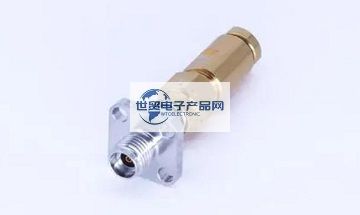Categorization:Product Information
The subminiature coaxial connector is a kind of connector with extremely small size, which is widely used in miniature devices and high-frequency applications, such as wireless communications, satellite communications, high-speed data transmission and other fields. This type of connector has the characteristics of compact design, low insertion loss, high reliability, easy installation and maintenance, so it has received more and more attention and application. The subminiature coaxial connectors are classified as SMA, SMB, SMC, SSMA, SSMB, MMCX, MCX, etc. These connectors typically feature a characteristic impedance of 50 ohms or 75 ohms and support high frequency bandwidths from DC to 60 GHz. Below we will introduce some of the common ultra-small coaxial connectors and their features. 1.SMA Connectors SMA connectors are one of the most common subminiature coaxial connectors with good repeatability and interchangeability for high frequency applications from DC to 18 GHz. Commonly used in miniature devices, antennas, and other radio communication systems, it is compact, lightweight, and easy to install and maintain. 2.MMCX Connector The MMCX connector is a very small coaxial connector for high frequency applications from DC to 6GHz. It is commonly used in miniature devices and other applications requiring high-speed data transmission and RF signal transmission. MMCX connectors are quick connect and disconnect so they are easy to install and maintain. 3.MCX Connector The MCX connector is a small coaxial connector for high frequency applications from DC to 6GHz. It is commonly used in miniature devices and other applications requiring high-speed data transmission and RF signal transmission, such as mobile communication, satellite communication, radio and other wireless communication systems. MCX connectors feature compact design, low insertion loss, high reliability, and ease of installation and maintenance. The main features of ultra-small coaxial connectors include: 1. High-frequency bandwidth: High-frequency bandwidths from DC to 60 GHz are typically supported. 2. Low insertion loss: The structural design and material selection of the connector can minimize the insertion loss. 3. High reliability: The connector has good mechanical stability and electrical performance, and can work stably for a long time. 4. Easy installation and maintenance: The structural design of the connector is simple and easy to install and maintain. The electrical performance parameters of subminiature coaxial connectors usually include the following aspects: 1. Frequency range: The frequency range of subminiature coaxial connectors refers to the signal frequency range that the connector can be used to transmit. Different connectors have different performance in this respect, which is usually clearly marked in the specifications of the connector. 2. Insertion loss: Insertion loss is the loss of a signal as it passes through a connector, usually described in decibels (dB). The smaller the insertion loss of the connector is, the smaller the influence of the connector on the signal in the signal transmission process is, and the better the connection quality is. 3. Return loss: Return loss refers to the loss caused by signal reflection in the connector, which is also described in decibels. The smaller the return loss of the connector is, the smaller the reflection effect of the connector on the signal is, and the better the connection quality is. 4. Isolation: Isolation refers to the degree of interaction between different signal channels in the same connector, which can also be understood as the degree of isolation between channels. The higher the isolation, the smaller the mutual interference between channels and the better the connection quality. 5. In-band ripple: In-band ripple refers to the fluctuation of the frequency response of the signal transmitted in the connector, that is, the degree of nonlinear distortion of the signal in frequency. The smaller the ripple in the band, the smaller the distortion of the connector in the signal transmission process, and the better the connection quality. 6. Impedance matching: Impedance matching refers to the degree to which the impedance inside the connector matches the impedance of the signal source and the load. The better the impedance match, the smaller the reflection loss and distortion of the signal, and the better the quality of the connection.

---------------------------------------------------------------------------------------------------
About the World Trade Electronic Products Network Platform related brief introduction and sales product brief introduction: World Trade Electronic Products Network-professional agent/production/sales of various { connector | wiring harness | cable products }; If you have relevant [connector | harness | cable products] procurement/purchase needs or want to buy/know what connector | harness | cable products solutions we can provide, please contact our business personnel below; if you have relevant [connector | harness | cable products] sales/resources and promotion needs, please click "Business Cooperation ←" to negotiate with the specialist!